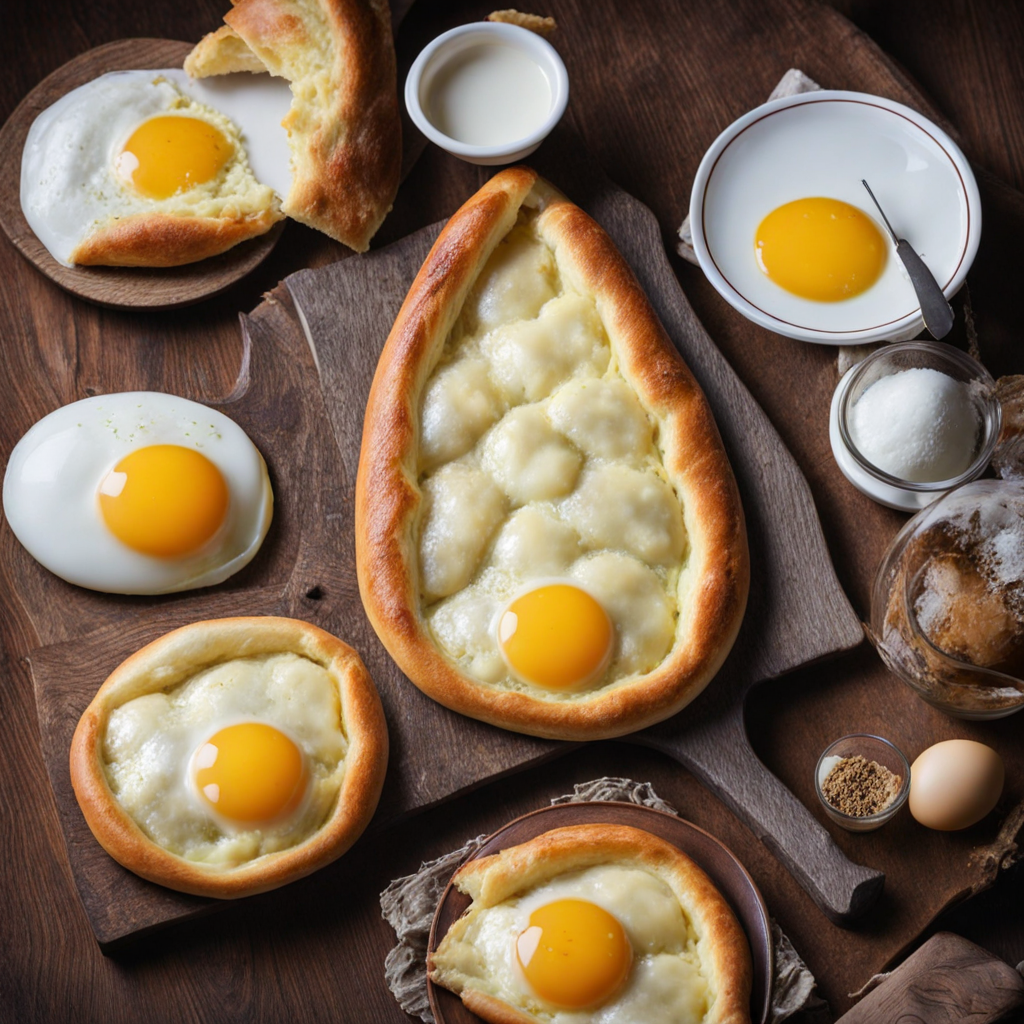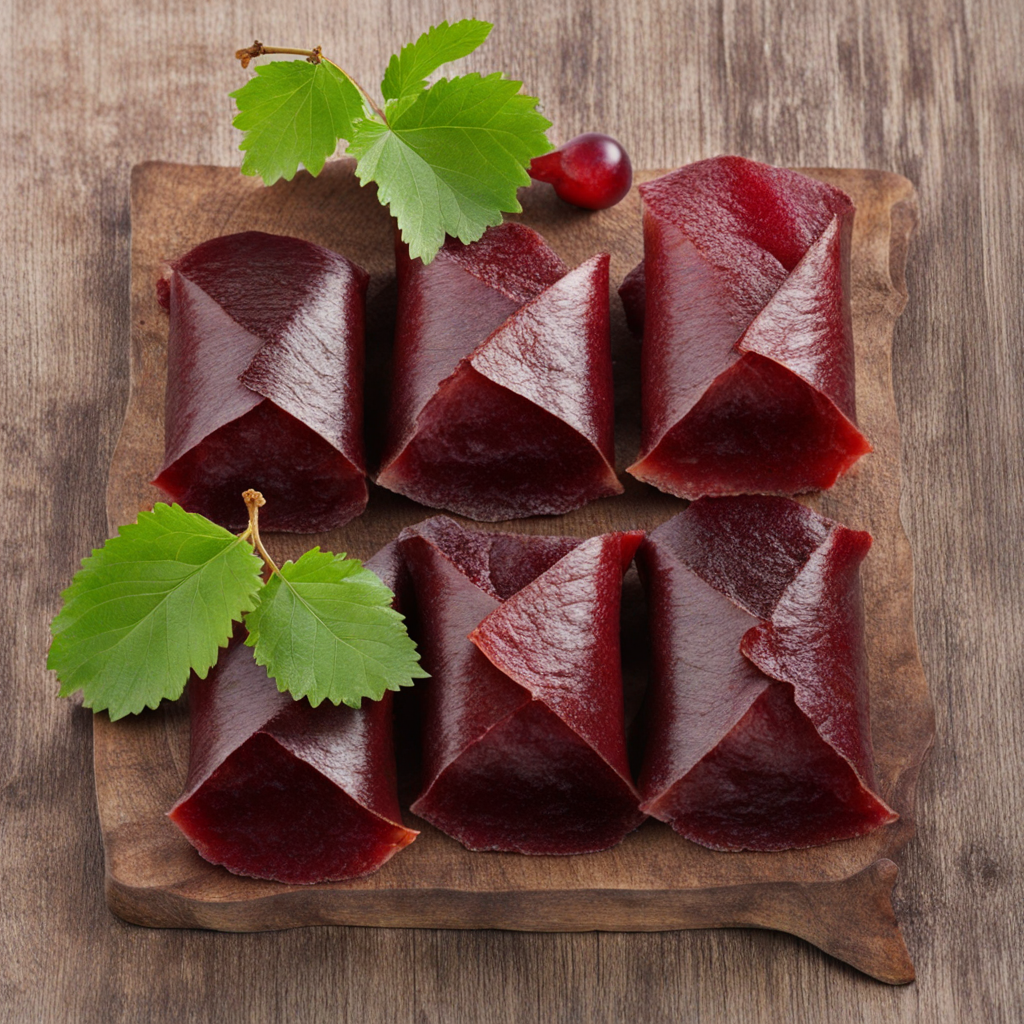Khachapuri
Khachapuri is a traditional Georgian dish that beautifully embodies the essence of comfort food. At its core, it is a cheese-filled bread that comes in various regional styles, each with its unique twist. The most famous version, Adjarian khachapuri, is shaped like a boat, filled with a rich mixture of melted cheese, butter, and a raw egg that is cracked on top just before serving. The dough is soft and slightly chewy, creating a perfect vessel for the gooey, savory filling that invites you to tear off a piece and dip it into the luscious cheese blend. Each bite offers a harmonious combination of textures, with the crispy outer crust complementing the creamy inside. The filling of khachapuri varies depending on the region, showcasing the local cheese varieties and cultural influences. In some areas, sulguni cheese is used, known for its stretchy and slightly salty characteristics, while others might incorporate feta or other local cheeses. The dough is usually made with simple ingredients - flour, water, yeast, and salt - yet the magic happens in the way it is handled and baked. When pulled fresh from the oven, the aroma of freshly baked bread combined with the scent of melting cheese is utterly irresistible, making it a popular choice in Georgian households and restaurants alike. Khachapuri is not just a meal; it represents a social experience meant to be shared. Often served as an appetizer or a main course, it brings people together, inviting them to experience the joy of breaking bread and savoring every gooey mouthful. The ritual of mixing the egg and butter into the cheese filling just before indulging adds an interactive element that enhances the overall experience. Whether enjoyed at a local eatery or made at home, khachapuri offers a delightful taste of Georgian hospitality and culinary tradition that is bound to captivate anyone looking for a new and exciting flavor adventure.
How It Became This Dish
Khachapuri: A Journey Through the Heart of Georgian Cuisine Khachapuri, a delightful cheese-filled bread, is one of the most iconic dishes of Georgian cuisine, embodying the rich culinary traditions and cultural heritage of Georgia. Its name derives from two Georgian words: "ხაჭო" (khacho), meaning "cheese," and "პური" (puri), meaning "bread." This dish, with its warm, cheesy interior and crusty exterior, is not just a meal; it is a symbol of hospitality, identity, and the deep-seated love for food that characterizes Georgian culture. #### Origins and Early History The origins of khachapuri can be traced back to ancient times when Georgian people began to cultivate wheat and dairy farming. Georgia's favorable climate and varied geography allowed for the growth of diverse grains and the rearing of livestock, particularly sheep and cows. This agricultural abundance led to the early development of bread and cheese-making, foundational elements of khachapuri. As early as the 9th century, historical texts reference the use of cheese in Georgian cuisine, but it wasn’t until the 12th century, during the reign of Queen Tamar, that khachapuri began to take on its more recognizable form. The medieval period was a time of great cultural flourishing in Georgia, with the establishment of trade routes that connected the region to the Byzantine Empire and the Middle East. These interactions introduced new ingredients and culinary techniques, enhancing the complexity of Georgia's food culture. #### Cultural Significance Khachapuri is more than just a dish; it is a significant part of Georgian identity. It is traditionally served at family gatherings, celebrations, and special occasions, symbolizing warmth, hospitality, and abundance. In Georgian culture, sharing food is a sacred act, and khachapuri serves as a centerpiece for gatherings, fostering a sense of community and togetherness. Each region of Georgia has its own unique take on khachapuri, reflecting local ingredients and culinary customs. For instance, the most famous version is the Adjarian khachapuri, originating from the Adjara region. This variant is boat-shaped, filled with a mixture of cheese, butter, and a raw egg, which is stirred into the hot, gooey cheese before eating. It represents the maritime culture of Adjara, with its coastal influences evident in the dish's presentation and preparation. In contrast, the Imeretian khachapuri, hailing from the Imereti region, is round and typically filled with a blend of local cheeses. It is often enjoyed as a daily meal, showcasing the Georgian love for simple, hearty foods. Other variations include the Mingrelian khachapuri, which is known for being particularly cheesy, and the Ossetian khachapuri, which incorporates herbs and greens into the filling. #### Development Over Time As Georgia experienced various historical shifts, including invasions, occupations, and the eventual incorporation into the Soviet Union, khachapuri adapted and evolved. The 20th century saw a significant transformation in Georgian cuisine, with the introduction of industrialized food production methods. While this period brought about changes in ingredient availability, it also allowed khachapuri to spread beyond Georgia's borders, gaining popularity among neighboring countries and in diaspora communities. During the Soviet era, khachapuri became a staple dish in many Georgian restaurants across the USSR. It was during this time that the dish began to gain recognition outside of Georgia. In major cities like Moscow and Tbilisi, khachapuri was served in various forms, often adapted to suit local tastes. The dish began to symbolize not only Georgian culture but also the broader idea of Soviet multiculturalism. After the collapse of the Soviet Union in the early 1990s, Georgia regained its independence, leading to a cultural renaissance. This era saw a resurgence in traditional foods, and khachapuri became a powerful emblem of national pride. Chefs and home cooks alike began to explore the rich history of Georgian cuisine, emphasizing authenticity and regional diversity. The dish became a symbol of resistance and resilience, reflecting the nation's journey through hardship towards a renewed sense of identity. In the 21st century, khachapuri has continued to evolve. With the rise of globalization and the food movement, it has found its way into international culinary scenes. Restaurants around the world have embraced khachapuri, often putting their own spin on the classic dish. Food enthusiasts and culinary influencers have also taken to social media, showcasing the preparation and enjoyment of khachapuri, further popularizing it and introducing it to new audiences. #### The Modern-Day Khachapuri Today, khachapuri is celebrated not only in Georgia but also in global gastronomic circles. Food festivals and cultural events often feature khachapuri, highlighting its significance as a cultural artifact. In 2019, khachapuri gained international recognition when it was included in the "World's 50 Best Foods" list, further cementing its status as a beloved dish. In Georgian households, the preparation of khachapuri is often a communal activity, with families gathering to make the dough and cheese filling together. This practice not only preserves traditional recipes but also strengthens familial bonds. The dish's versatility allows for experimentation with different cheeses, seasonings, and fillings, showcasing the creativity of modern Georgian cooks. #### Conclusion Khachapuri is more than just a meal; it is a narrative woven into the fabric of Georgian culture, reflecting the country's history, traditions, and values. From its humble beginnings as a simple cheese-filled bread to its status as a culinary icon, khachapuri embodies the essence of Georgian hospitality and the enduring connection between food and identity. As it continues to evolve and adapt in the modern culinary landscape, khachapuri remains a timeless symbol of Georgia's rich gastronomic heritage, inviting everyone to experience the warmth and joy that comes with every bite.
You may like
Discover local flavors from Georgia







